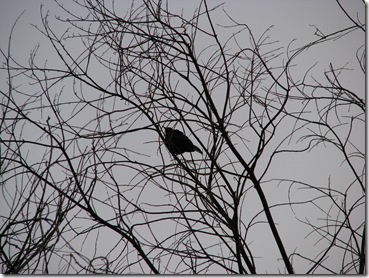16 May 2008 The smaller birch has many wiggly leaf mines but the larger tree does not seem to be similarly affected.
The black bryony is now about one metre up its pole.
18 May 2008 7.30pm and the sunlight filters through from the north west. It is quite cold.
I have weeded the heather area.
A flower is about to open on one of the three plants of cut-leaved cranesbill (Geranium dissectum) in Submespilus Assart.
Tops have been nipped from one of the rosebays and the perforate St Johnswort. This can only have been done by deer, though I could not find any footprints.
21 May 2008 I have at last done some serious labouring. I tied back the brambles and physically pushed them into North Wall and the box bush where the thorns have, for the moment, held them fast.
I have also lightened up the heather and hornbeam in The Waste and on Bittercress Heath. Despite the volume of arisings I have removed in the last four and a half years, I am sure the land is more fertile that when I began the project and things can be smothered rapidly at this fast-growth time of year.
Heath speedwell (Veronica officinalis) is in flower now and pink is showing on the bud on the campion flower in The Waste. I have found new shoots on the gipsywort, now in its third season and seemingly not minding in the least that it is not growing in a wetland. The only plants struggling a bit are the square-stalked St Johnsworts which appear, once again to be suffering some sort of fungal attack on the leaves, distorting them and somewhat stunting the growth, and a ragwort that has keeled over.
Mosquitoes, Anopheles plumbeus, are everywhere and biting well if they get the chance.
22 May 2008 I bought some new shears and have been keeping Bramble Hedge and other unruly spots in order.
The red campion is now fully out: later than larger plants but determined to make it.
The soft-rush (Juncus effusus) has produced many of its brown flower burrs three quarters of the way up its stems and I wonder if any of the little Coleophora moth caterpillars will make their cases among them.
Creeping buttercups (see picture above) are putting up a respectable show of flower for the first time since this project began. In the past they have been rather shy flowering.


